As a coach analyst who has run sessions for more than 10 years and logged way too many hours of film, here’s my quick take: the 4-2-3-1 formation is the safest modern shape for control, width, and simple build-up. You get a double pivot, one clear number 10, wide wingers, a lone striker, plus easy pressing triggers. It works. It’s not magic. But it works.
Understanding the 4-2-3-1 Formation Setup
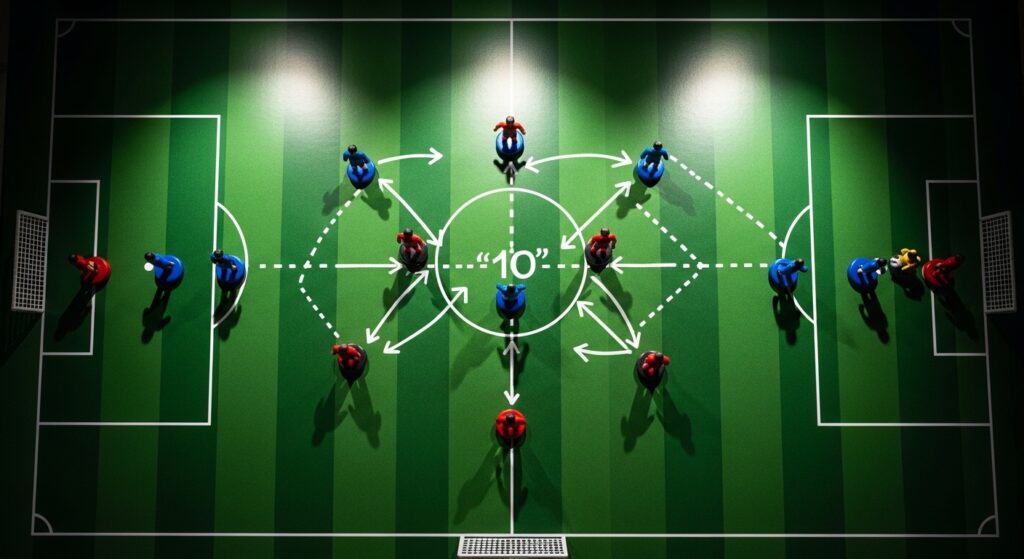
Picture four defenders in a neat line. Two holding mids in front of them—one calmer, one a bit louder. Then a line of three: a 10 who connects, two wingers who stretch, and a striker who leads the press and pins the center-backs. In my experience, that’s the spine that gives you balance. Enough bodies behind the ball to stop counters; enough lanes ahead to attack the half-spaces.
When I’m on the touchline doing live reads, I watch how the double pivot moves sideways together. If they don’t slide as a unit, your shape opens up like a cheap umbrella in the wind. It’s the first thing I check during live commentary segments—because if the pivots are late, the rest is guesswork.
Why Coaches Love (and Sometimes Overuse) the 4-2-3-1 Formation
I’ve always liked it because it’s flexible. Swap a winger for an inverted forward? Fine. Push the full-backs high and let the pivots cover? Still fine. You can play a calm mid-block or a sharp high press. But yes, it can look boring if your 10 hides or your wingers won’t attack the back post. I’ve seen teams hog the ball and do nothing with it. Sterile dominance. Seen it. Coached it. Regretted it.
On paper, it’s a dream for match breakdowns. In reality, tiny tweaks make it sing. The 10 needs to stand between lines. Wide players must time runs, not just hug the touchline. And the pivots? One goes, one stays—it’s a rule I drill every week. I unpack this stuff a lot in my longer match analysis pieces, because the shape is simple; the habits are not.
4-2-3-1 Formation Player Roles Explained
If you want the textbook version, the Wikipedia page on 4-2-3-1 lays out the origins and structure. Useful, sure. But the game is played by humans who take bad touches and make odd choices, so here’s how I coach the roles when the grass is bumpy and the sun is in someone’s eyes.
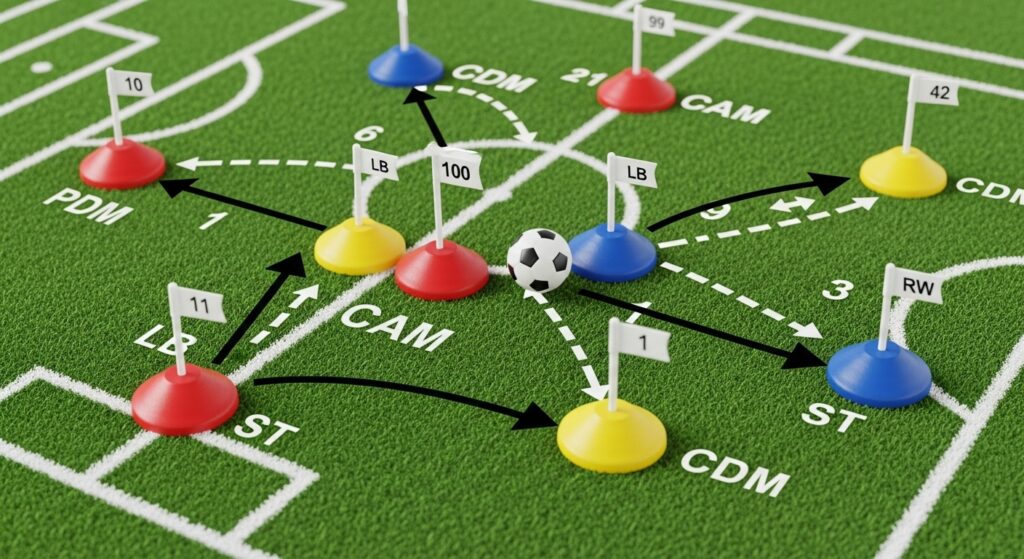
| Position | Main job | Coaching cue I use |
| Full-backs | Give width, time underlaps, protect far post | Arrive late, leave early; scan weak side |
| Center-backs | Win first ball, own the box, start build-up | Shoulders open; split on keeper’s touch |
| Double pivot | Secure the middle, circulate, plug counters | One screens, one steps; talk every five seconds |
| Wingers | Attack half-spaces, press full-backs, back-post runs | Inside first, wide second; be brave 1v1 |
| 10 (attacking mid) | Link play, create overloads, final pass | Stand where they can’t see you |
| 9 (striker) | Lead press, pin CBs, finish | Press on backward touch; own the penalty spot |
How to Win with the 4-2-3-1 Formation
- Use inverted wingers if your full-backs love to overlap. Otherwise, go classic wide and crash the far post.
- Drill press triggers: back pass to their full-back, bad touch from their 6, square ball to their CB. Jump together or don’t jump at all.
- Teach the 10 to “freeze” center-backs with fake checks. One step toward the ball, then spin behind into the half-space.
- In build-up, keep the pivots on different heights. Flat lines kill passing options.
People ask me why some teams climb fast up charts with this shape. Simple: they defend transitions well, and they score from cut-backs. That’s it. You do those two things, and you look like a genius in the team rankings by November.
Attacking Patterns and Combinations in 4-2-3-1
Here’s my short list that works at almost every level I’ve coached. Nothing fancy. Just reliable.
- Full-back underlap when winger drags the full-back wide. Pivot feeds the runner. Low cross. Tap-in city.
- Winger to 10 bounce pass, then blind-side run from the 9 between CB and FB. Third-man run. Easy concept, hard timing.
- Switch early to the weak-side winger. Don’t cross. Cut-back to edge of box runner (the far-side pivot). Low xG shots become decent when unmarked.
- Corner routines: near-post glance to back-post screen. Your 9 should live at the keeper’s elbow.
For a bigger picture on shapes and why teams copy each other (and then pretend they invented it), I sometimes point friends to broader explainers like football formations and classic strategy pieces on strategy and tactics. Worth a skim if you like context beyond the memes.
Defending Principles in the 4-2-3-1 Setup
Three blocks. That’s what I teach: high press for 5–7 seconds after a turnover (counter-press), then mid-block if they break the first line, then low block in the last third. In my experience, telling players “press forever” makes them jog everywhere and arrive nowhere.

Here’s a thing I say on repeat: if the winger presses, the full-back must be ready to meet the next pass. No gaps. If your winger goes and your full-back naps, congratulations, you just opened a runway. When I jot notes for pieces on matchday culture, I joke that the chant should be “shift, slide, share” because that’s all defending is in this setup.
Common 4-2-3-1 Mistakes (and How to Fix Them)
- 10 too deep. Fix: give them a “no-touch zone” in the center circle during build-up. They must stand between lines.
- Wingers too wide. Fix: draw the half-space lane with cones in training and demand starting positions inside.
- Double pivot both step. Fix: call names—“Sam stay, Leo go.” Make it a habit to say it out loud.
- Full-backs cross from nowhere. Fix: only cross after a cut-back angle exists. Otherwise recycle.
- Striker presses alone. Fix: tie the press to the 10’s trigger. If 10 doesn’t go, 9 delays and screens.
Training Drills for Mastering the 4-2-3-1 Formation
- Rondo with gates: pivots must open passing lanes on different lines. Score only if you split a line.
- Positional play 7v7+3: two channels marked as half-spaces; goals count double from cut-backs.
- Pressing waves: 8-second press, then reset to mid-block. Teaches “on” and “off,” not endless chasing.
- Final-third finishing: winger cut-back to 10 or opposite pivot. First-time finish only.
When systems get trendy, people overthink them. Trends pass. Good habits stay. If you want deep dives and nerdy graphs, I pack those into my match analysis archive, but to be fair, this shape rewards simple repetition more than big speeches.
4-2-3-1 Formation Cheat Sheet (Situations and Adjustments)
| Situation | What I call | Quick tip |
| Opposition low block | Patience and cut-backs | Use overlaps; finish from the penalty spot, not the corner flag |
| Opposition high press | Pin and spin | 9 pins CB, 10 spins off; hit half-space early |
| Transition defense | One stops, one mops | Nearest pivot fouls or blocks; partner covers depth |
| Wing overloads | 3v2 ladder | Full-back + winger + 10 rotate; one always in behind |
| Protecting a lead | Hide the ball | Switch sides through pivots; rest with the ball |
Tactical Insights and Betting Angles
I don’t bet games I coach. Obvious reasons. But when I peek at lines, I look for teams that create high-quality cut-backs and limit transition shots—this shape leans that way when drilled. If you like that universe, I stash thoughts in the betting predictions corner now and then. No guarantees, only edges.
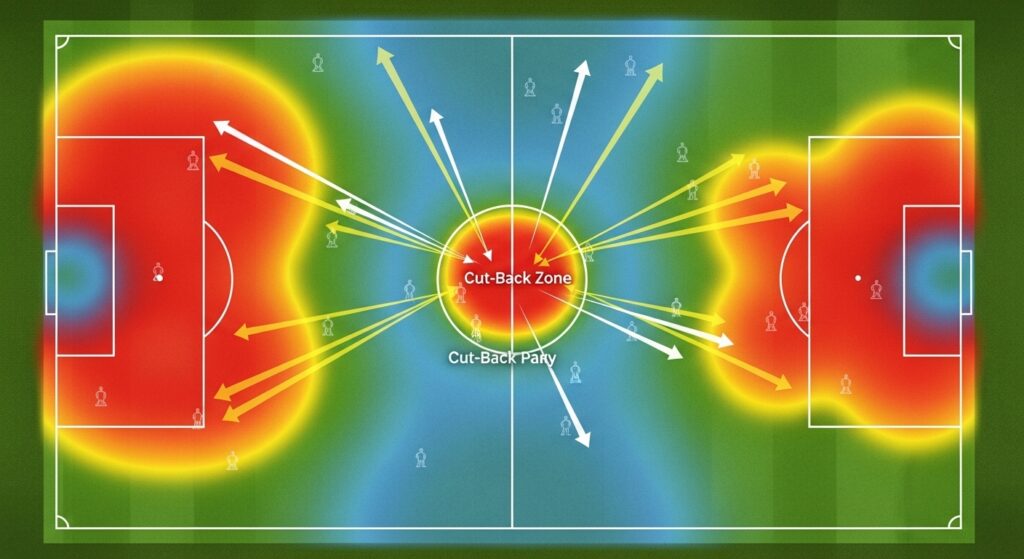
Why this shape won the last decade
Honestly? It’s forgiving. You can be average at two positions and still hold your own if your pivots are smart and your 10 shows up. I’ve coached squads where the winger couldn’t beat a cone but hit the back post every time. Still scored goals. The margins come from the boring stuff: spacing, scanning, timing. The “secrets” are public; execution isn’t.
If you want to see how tactical reports frame this stuff beyond my grouchy voice, skim the technical roundups from UEFA technical reports. You’ll notice a theme: compact shape, quick transitions, and smart use of the 10. That’s this setup, more or less.
Anyway, I could keep going, but I’ve got clips to tag and a training grid to paint. If your pivots talk and your 10 hides well, you’re already halfway there. If not, don’t blame the shape. Blame the habits.
FAQs on the 4-2-3-1 Formation
Is this shape good for youth teams?
Yes. It’s simple to teach: two mids protect, one 10 connects, wingers run back post. Clear jobs help kids learn fast.
What’s the hardest role to fill?
The 10. They need calm feet and good scanning. If you don’t have one, use a second striker there and go direct.
Do the full-backs always bomb forward?
No. Only when the pivot covers and the winger tucks inside. If both full-backs fly, you’ll eat a counter.
Can I switch to a 4-4-2 mid-game?
Easy. Pull the 10 next to a pivot off the ball. With it, push a winger up next to the 9. Same players, new looks.
How do I beat teams using this?
Press the pivots with curved runs, trap the 10’s lane, and counter into the space behind their full-backs. Simple plans win.
Oh—and if you want to hear me rant in real time when the 10 refuses to show, I’m probably doing it during live commentary. If not, you’ll catch the receipts in the next match analysis post, and yes, I’ll still be reminding folks that team brains beat star legs in the team rankings. The rest—the noise, the songs, the coffee—lives in matchday culture. And if you’re the spreadsheet type, peek at betting predictions and argue with me later.

I’m Daniel Moore, and I live for the thrill of the game. Get energetic live commentary, detailed match analysis, data-backed betting predictions, and official team rankings right here.

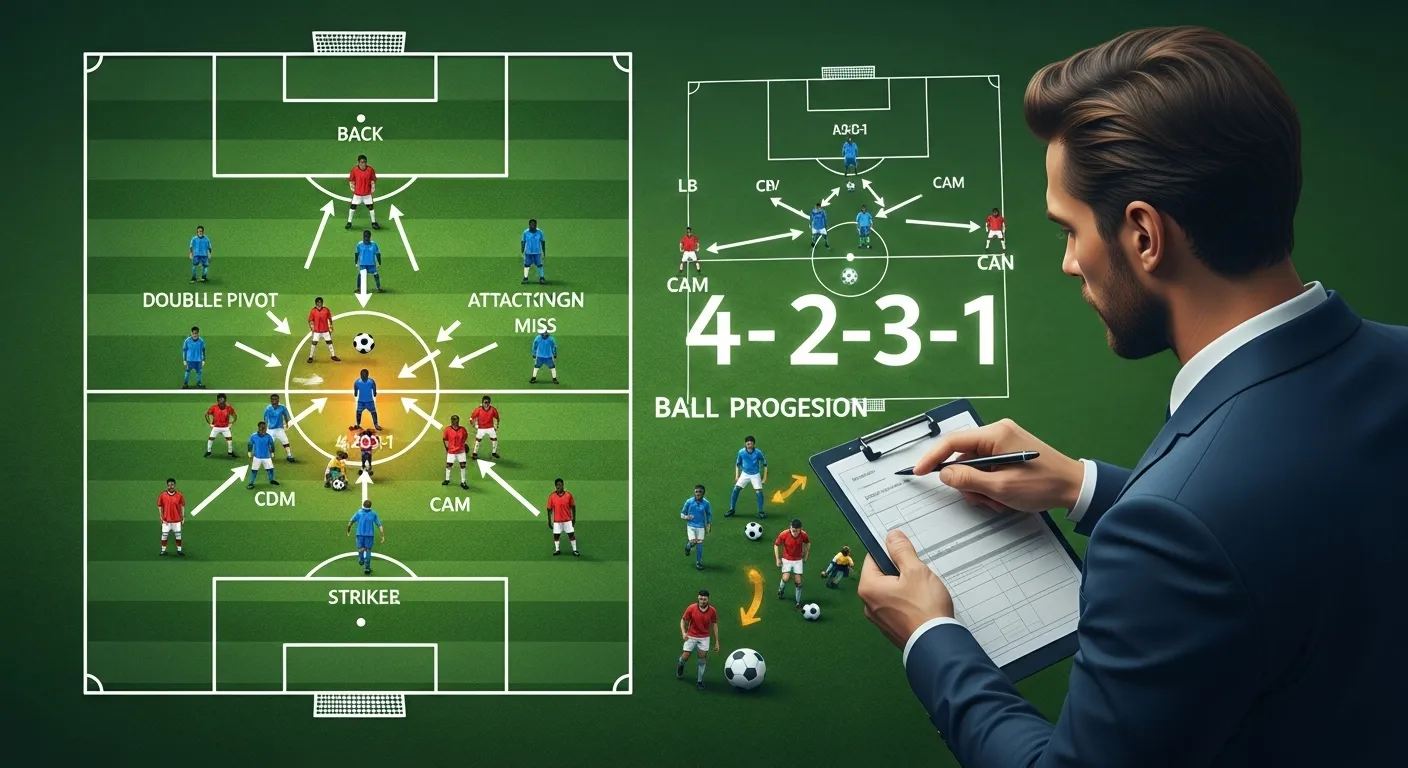

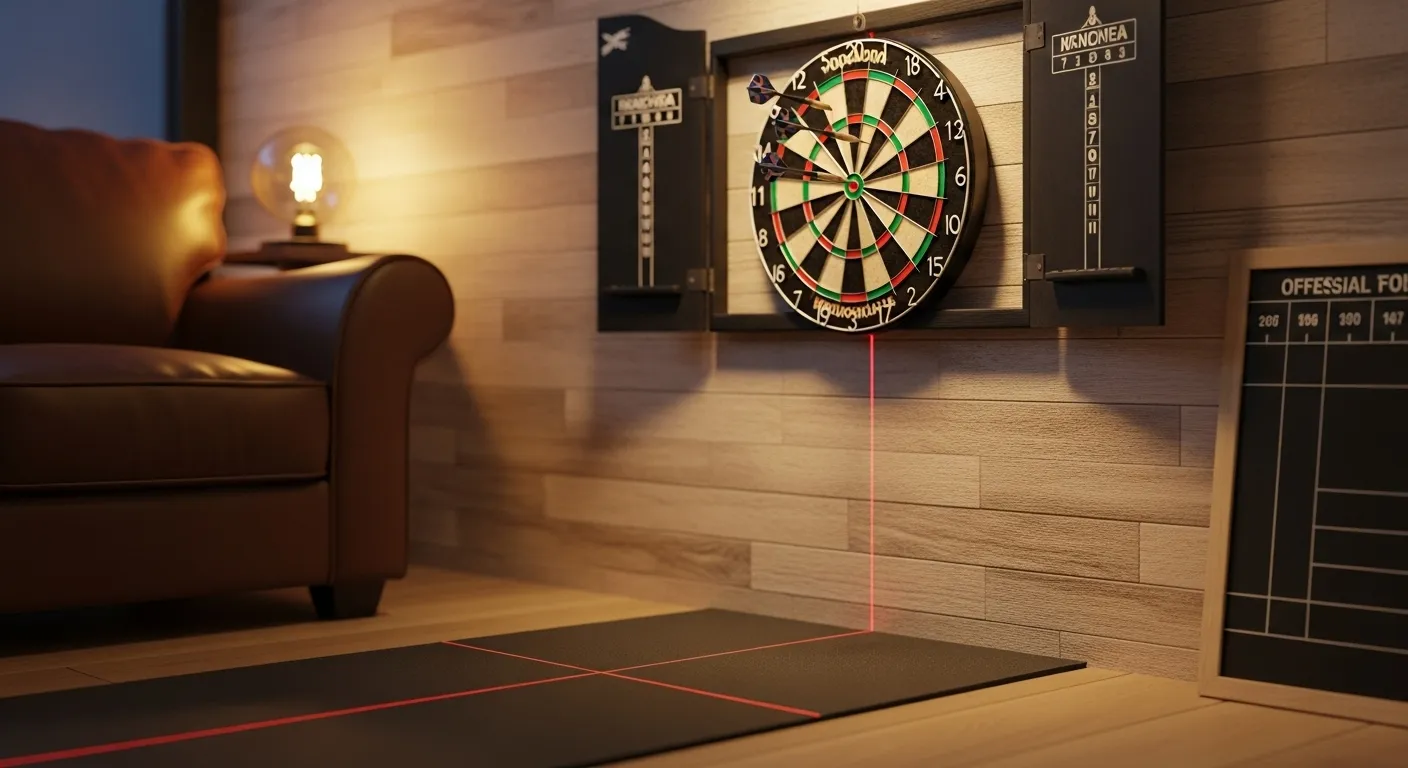
How do you prevent the shape from falling apart like a cheap umbrella in the wind?